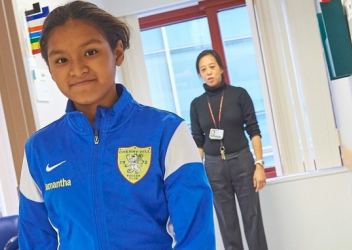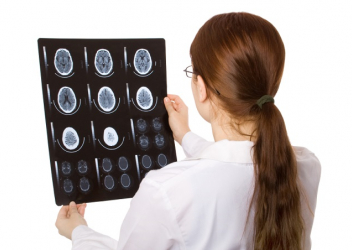Research In Action
Research In Action
Breadcrumb

I recently collaborated with colleagues in ophthalmology to publish the first policy statement for the American Academy of Pediatrics regarding the evaluation of visual symptoms during concussion diagnosis and recovery, along with a companion clinical report with relevant clinical assessments. Visual symptoms commonly occur following concussion in youth, impacting 60 to 70% of youth, including those with prolonged concussion symptoms, highlighting the importance of screening, identification, and management. Many youths will recover spontaneously from visual symptoms following concussion; but for those with persistent symptoms, referral to a specialist with concussion expertise may be necessary.
“Vision and Concussions: Symptoms, Signs, Evaluation, and Treatment” addresses strategies to identify, evaluate, and manage visual symptoms and disorders following concussion, including children with pre-existing special health care needs. “Evaluation of the Visual System by the Primary Care Provider Following Concussion” offers additional details to aid primary care clinicians when assessing the visual system and provides guidance for clinical management to support return to school, sports, and other activities.
More Than Just Clear Vision
Vision is not just about how clearly a child can see an object (visual acuity). A working vision system also includes coordinated eye movements and binocular vision. Previous research has found that components of an extended vision assessment can feasibly be performed in a general pediatric primary care and emergency department setting. This type of screening examination can also be performed during multiple visits over time.
Impact on Learning
Because vision problems after concussion can have a substantial impact on return to the educational setting, clinicians need to understand strategies that effectively support reintegration of children and adolescents with concussion back into school. Examples of accommodations in the classroom that may be particularly supportive for a child with concussion and visual issues include:
- decreasing environmental stressors such as bright lights
- modifying the length of visual tasks
- considering the use of augmentative systems, such as audiobooks or text to speech programs
These temporary accommodations or adjustments for visual aspects of learning in school can have a tremendous impact on children and adolescents during their re-entry to school while they recover from a concussion.
Importance of Early Referral
For youth with persistent vision issues after concussion (after 2 to 4 weeks), primary care providers should make a referral to a specialist who has experience caring for concussion-related visual disorders. Specialists may include clinicians in sports medicine, rehabilitation, neurology, neuropsychology, and ophthalmology. Early referral to specialists can support a shorter recovery and reduce the risk of persistent visual symptoms that contribute to prolonged academic difficulties.
Early identification of vision deficits following concussion can help clinicians to provide timely supportive care and recommendations for re-entry to school. For those with persistent visual symptoms, referral to an appropriate specialist is warranted to optimize treatment and quality of life.
Read the AAP Policy Statements here and here.
Click here for more information on the Minds Matter Concussion program.





